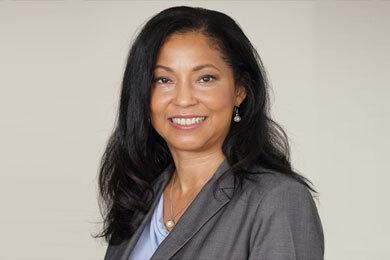
Credit: NIH ORWH
In this week’s blog post, we are happy to introduce Janine Austin Clayton, M.D., FARVO, director of the NIH Office of Research on Women’s Health (ORWH) and co-chair (along with NIH Director Francis S. Collins, M.D., Ph.D.) of the NIH Working Group on Women in Biomedical Careers (WgWBC). She has been a member of the ORWH senior leadership team since 2008. In both of her important roles, Dr. Clayton has strengthened NIH support for research on diseases, disorders, and conditions that affect women. For example, she spearheaded the important NIH policy requiring scientists to consider sex as a biological variable in their research plans.
Check out our Q&A with Dr. Clayton below to learn more about the WgWBC.
Q: What is the history and mission of the Working Group on Women in Biomedical Careers?
In 2006, the prepublication of the National Academies report Beyond Bias and Barriers: Fulfilling the Potential of Women in Academic Science and Engineering called for innovative action to overcome institutional and environmental barriers to the advancement of women at all career stages. In response, NIH created the WgWBC, which works to maximize the potential of women scientists and engineers. The WgWBC considers how NIH programs and policies give attention to the NIH intramural communities and the concerns of women at NIH. It also considers the broader context of girls and women in science, providing special attention to barriers, women scientists in underserved racial and ethnic groups, and mentoring.
Q: What has the Working Group on Women in Biomedical Careers accomplished?
The WgWBC works across NIH and extramurally to support women in biomedical sciences at all levels of their education and careers. The group recently launched the redesigned Women in Science website. The new site describes the history of the WgWBC and provides information on the working group’s subcommittees, supported programs, grants, career development resources, NIH diversity resources, and career flexibility initiatives.
The Women in Science website has profiles of noteworthy women scientists at NIH and throughout the research community on its Women Scientists in Action webpage. The website also provides advice and inspiration to young and aspiring scientists through the Pearls of Wisdom video series, in which prominent women in science and medicine share experiences related to career advancement and professional development. The Women of Color Research Network (WOCRN) page encourages visitors to join the discussion in the WOCRN LinkedIn group, which the WgWBC helped launch; the group addresses issues faced by women and other people underrepresented in scientific careers.
Among its many achievements, the WgWBC has:
- Coordinated the development of funding opportunities and resources to enhance careers and increase the number of women in leadership positions in biomedical research, including the NIH Prize for Enhancing Faculty Gender Diversity in Biomedical and Behavioral Science and the Notice of Intent to Publish a Funding Opportunity Announcement for Advancing Gender Inclusive Excellence (AGIE) Coordinating Center.
- Developed the funding opportunity announcement titled “Research on Causal Factors and Interventions that Promote and Support the Careers of Women in Biomedical and Behavioral Science and Engineering.”
- Modified the biographical sketch portion of NIH grant applications, allowing applicants to describe reasons for periods of decreased research productivity.
- Amended the application for NIH conference grants to require applicants to describe plans to identify resources for family care at conference sites.
- Sponsored national workshops on mentoring women in biomedical careers, best practices for sustaining career success, and related topics.
- Extended the tenure clock for intramural NIH scientists by one year to accommodate family leave, as well as the allowed period of paid parental leave to 8 weeks for NIH intramural and NIH-funded extramural trainees.
Q: Could you tell us more about the Women of Color Research Network (WOCRN)?
The Committee on Women of Color in Biomedical Careers, a subcommittee of the WgWBC, recognizes that women of color may face unique challenges as they enter and advance in their careers. Some of the obstacles described in the historic 1976 paper by Dr. Shirley Malcom and colleagues1 unfortunately remain. The WOCRN was created to provide women of color with support and information about the NIH grants process, advice on career development, and a venue for networking and sharing information.
In addition to sharing helpful information on LinkedIn, members of WOCRN and the broader scientific community are encouraged to join ORWH for our Facebook Live panel discussions and Q&A sessions about leadership among women in STEMM. The discussions have featured such panelists as Kizzmekia Corbett, Ph.D., a Senior Research Fellow at the Vaccine Research Center of the National Institute of Allergy and Infectious Diseases (NIAID), and the scientific lead of NIAID’s Coronavirus Vaccines & Immunopathogenesis (CoVip) Team. These panels are lively and informative. Follow ORWH on Facebook to find previous recordings and join in future discussions.
Q: Finally, what resources does the Working Group on Women in Biomedical Careers provide?
The WgWBC has curated lists of:
- Professional/career development resources,
- Tools,
- Networking opportunities, and
- NIH programs that are relevant for women throughout their educational and career trajectories.
It’s an honor to work with Dr. Collins, the IC directors, and other representatives of NIH intramural and extramural staff who make up the WgWBC to help make this needed information available. Careers in biomedical science are challenging and rewarding. In turn, science is challenged and rewarded when more diverse experiences and perspectives are brought to the table.
References
1 Malcom SM, Hall PQ, Brown JW. (1976). The double bind: The price of being a minority woman in science [white paper]. American Association for the Advancement of Science (AAAS). https://files.eric.ed.gov/fulltext/ED130851.pdf

